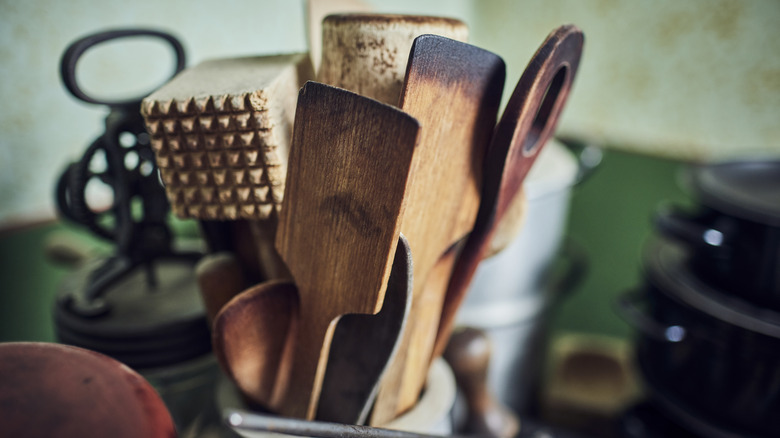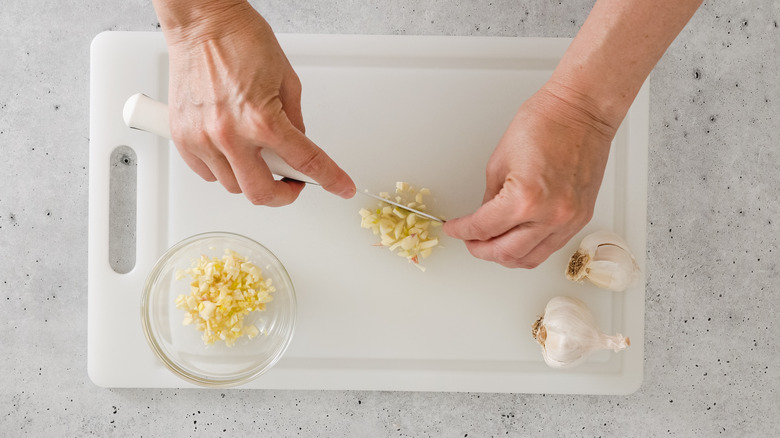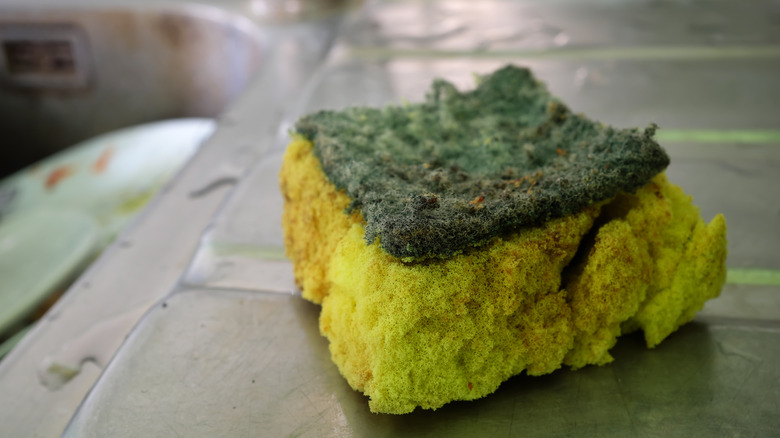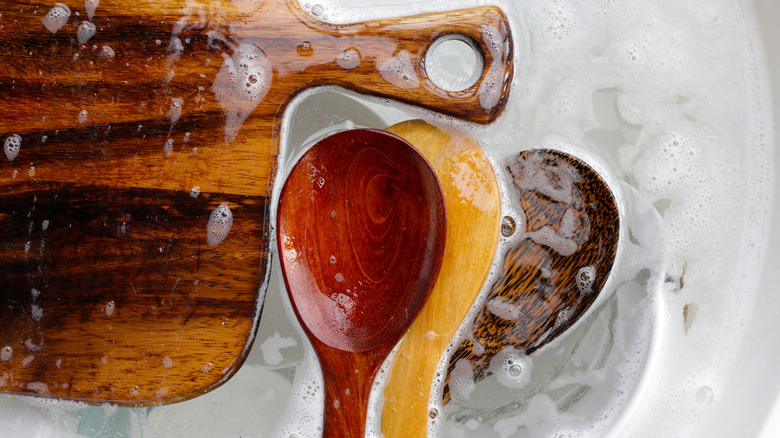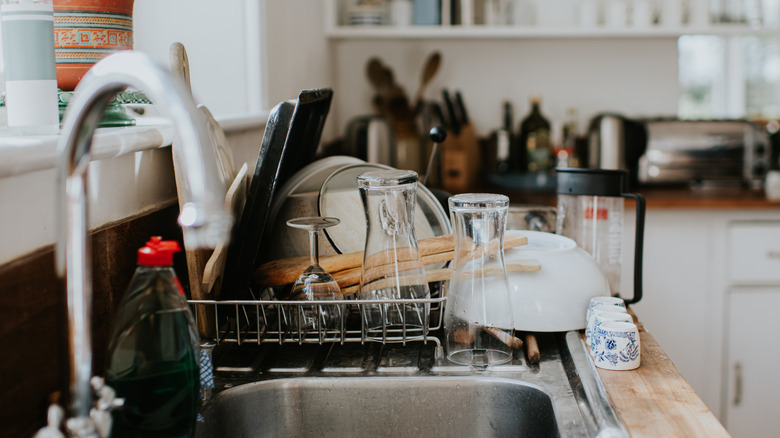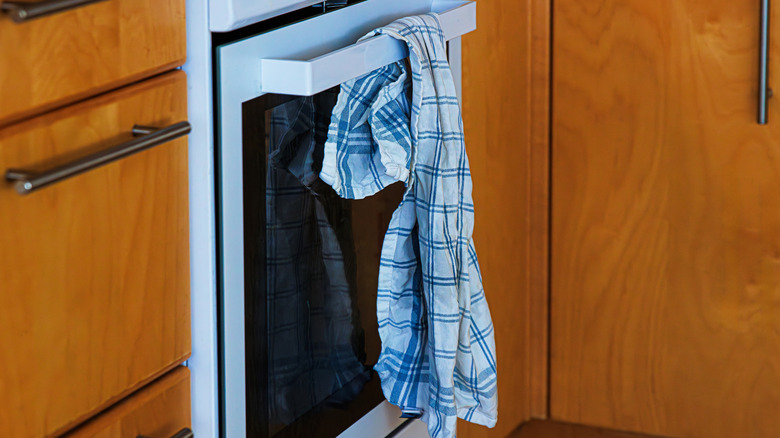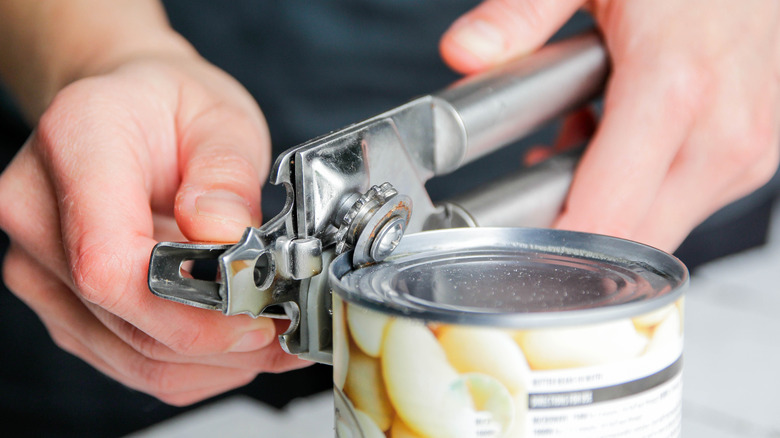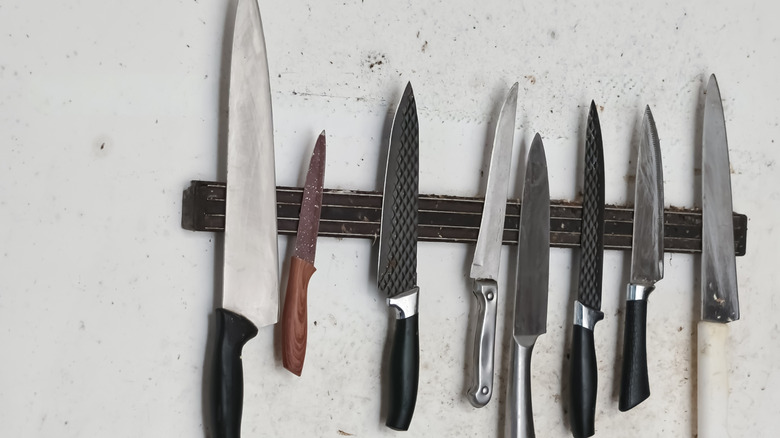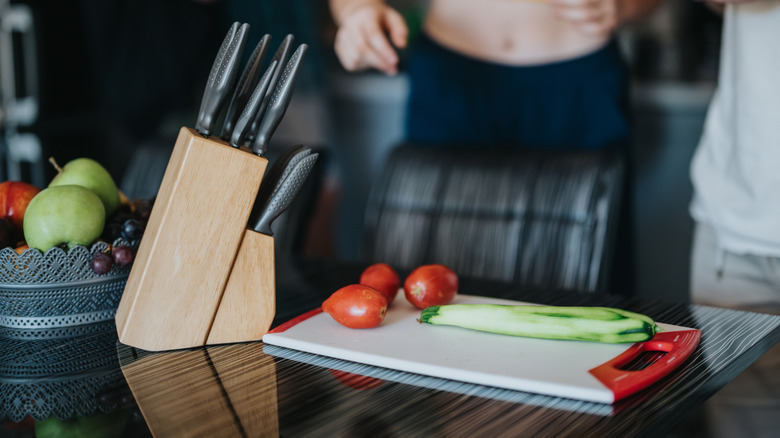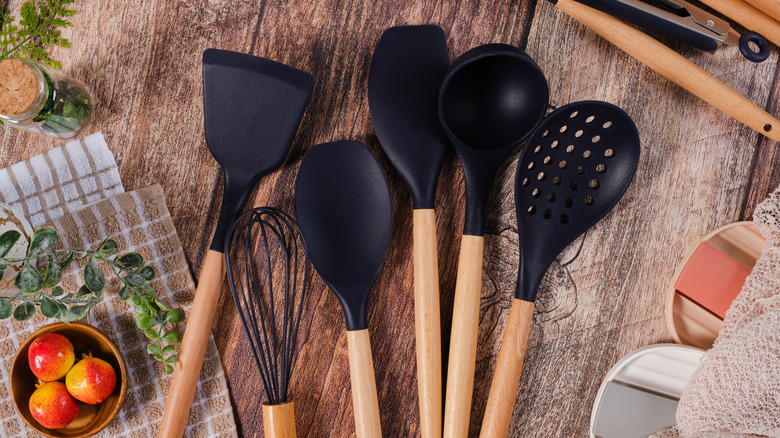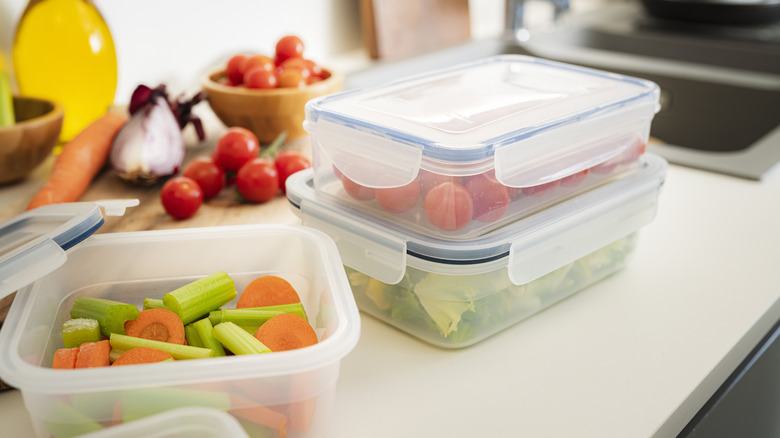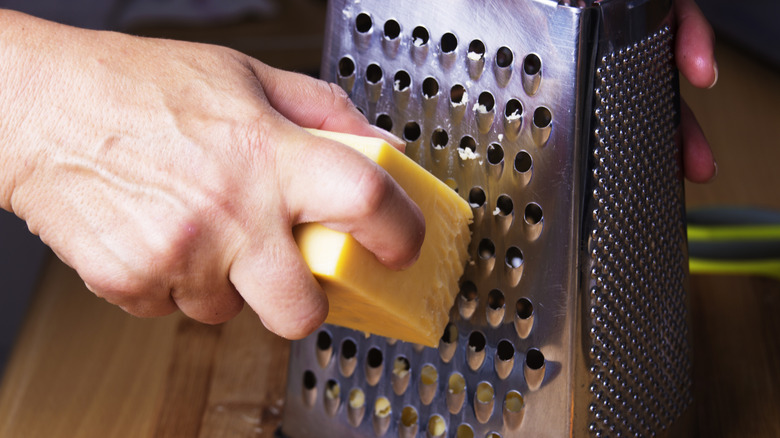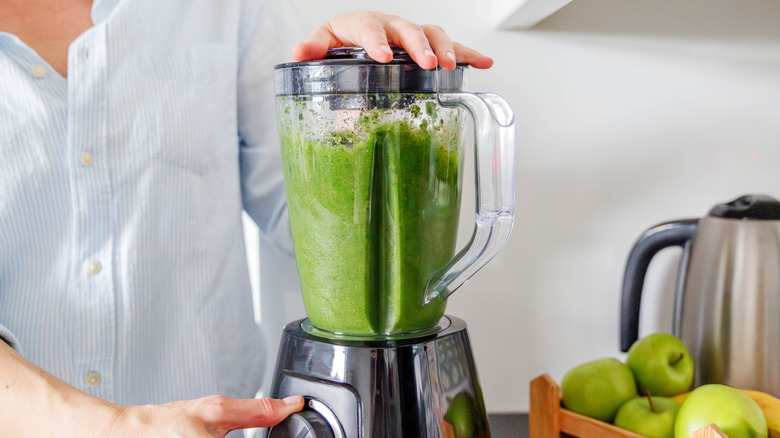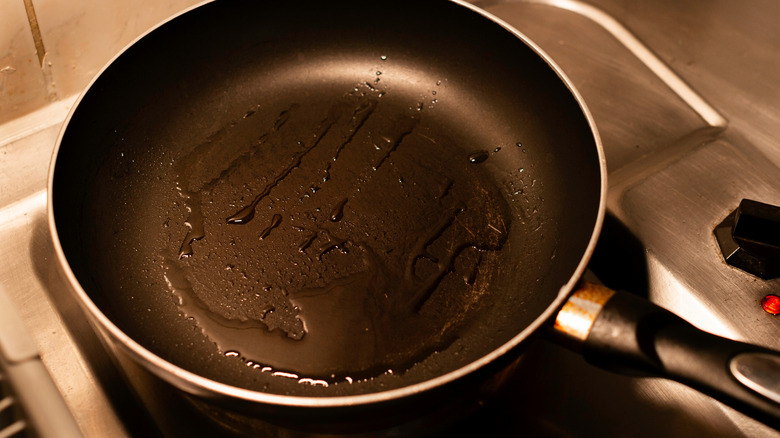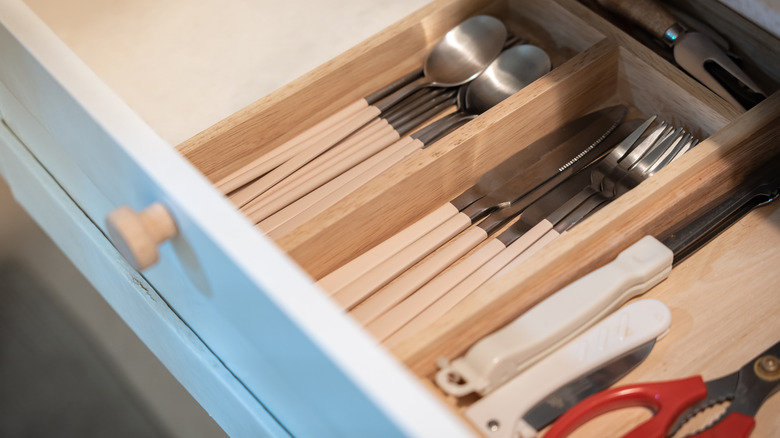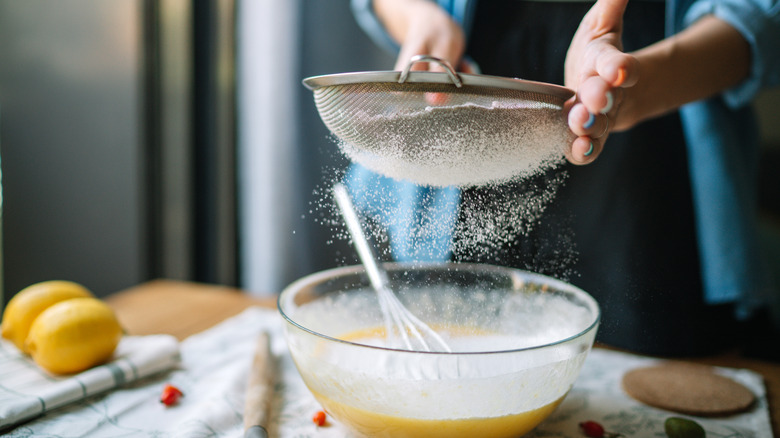15 Kitchen Tools You Should Be Cleaning More (& When It's Time To Replace Them)
Most people spend huge amounts of time in the kitchen, and for many, this room is the heart of the home. When looking for tips on how to best clean your kitchen, remember that cooking tools deserve just as much attention. Because a lot of utensils live in drawers, there's a certain "out of sight, out of mind" mentality that often stops us from cleaning them as often as we should. And this is a problem, as there can be cross-contamination from our hands onto these items. From a hygiene point of view, keeping your kitchen necessities clean is an easy way to help prevent bacteria from spreading.
Frequent cleaning can also make your kitchen tools and appliances last longer. However, it's also important to know when to admit defeat and accept that your utensils need replacing. Repeated use will inevitably make your tools and utensils less effective. They can even start to harbor bacteria over time, making them a health hazard. The occasional upgrade will make cooking more effortless, and regular scrubbing will help to keep nasty germs at bay. We've rounded up 15 tools that often miss out on the deep clean they deserve and tell-tale signs that they've reached the end of their lifespan.
Plastic cutting boards
One of the worst culprits in your kitchen for harboring dirt and bacteria is the humble plastic chopping board. You might think that it's safe from bacteria because it gets cleaned in a hot dishwasher. But, in fact, plastic will start to degrade when it's exposed to heat, and this can even lead to microplastics leaching into your food. In addition, knife marks will scar and scratch your board, making it easier for bacteria to infiltrate. This is a clear sign that it's time to replace the cutting board in your kitchen.
Kitchen sponges
Kitchen sponges are generally damp and kept in room temperature environments — perfect conditions for bacteria to thrive. It's fairly easy to tell when it's time to throw out the kitchen sponge, as it will either look dirty or have a bad smell. If your kitchen sponge smells like mildew, bacteria has already started to grow. However, you can extend the life of a sponge by sanitizing it on a hot wash cycle in the dishwasher, or soaking in hot, soapy water and immediately putting it in the microwave for one minute, provided there are no metal components.
Wooden spoons
Your trusty wooden spoon is a secret dirt and grease hoarder, thanks to its naturally porous material. Their porous nature means they can also absorb different liquids and odors, which can make them smell quite unpleasant. So, if your wooden spoon has deep splits or smells less than fragrant, it's time to think about replacing it. However, you can disinfect wooden kitchen utensils by washing them regularly with hot water and soap. To keep them in better condition for longer, treat the spoons once a month with mineral oil that's specifically made for kitchen utensils.
Dish rack
The simple countertop dish rack you use to dry plates and pans may seem innocuous when it comes to accumulating germs and dirt. After all, we only put clean dishes on them. However, water collects at the bottom of dish racks, which can lead to mold and bacteria buildup. Couple this with soap scum and food waste, and you've got a perfect breeding ground. Clean your drying rack once a week to prevent bacteria, or say bye to your slimy traditional dish rack with a cleaner wall-mounted alternative.
Dish towels
Research shows that dish towels are typically the dirtiest items in the kitchen and are a magnet for bacteria. Frequently used to not only dry dishes but also mop up spills and wipe hands when preparing food, dish towels may carry Salmonella and other bacteria. To ensure your dish towels stay fresh, wash them frequently and on the hottest wash cycle that's recommended. Follow this up by putting them in the dryer immediately to prevent any mold from growing on a damp towel. Frayed or threadbare towels should, of course, be replaced.
Can opener
It's easy to assume that a can opener doesn't need to be cleaned. However, as you use it, residue from the lids can build up in the crevices of the device. There are several signs that your can opener needs a deep clean, such as visible food gunk. Rust can also form and prevent the can opener from gliding properly. To clean your can opener, soak the blades in white vinegar to break up rust and food particles, using a small toothbrush to scrub the grooves thoroughly. If this doesn't work, it's time for a new can opener.
Knives
Good kitchen knives are expensive, so you'll want to ensure you get longevity out of them. Plus, given that knives make direct contact with food, it's essential to clean them frequently and thoroughly. Rinse them immediately after use in warm, soapy water and dry them completely before putting them away. You should never wash your kitchen knives in the dishwasher, as the blades and handles can become damaged. Knives should be kept in a block or wall-mounted holder to prevent scratches
Knife blocks
Drying your knives properly is vital to keeping your knife block clean. Putting damp knives in the block will create a moist, dark environment that bacteria loves most. Clean your knife block once monthly by removing the knives and shaking it upside down to remove loose debris. Wash thoroughly in hot, soapy water and use a small brush to scrub each slot one by one. You can also sanitize it with a solution of five tablespoons of bleach to a gallon of water. But if it smells off or has visible mold, it's time to throw it away.
Rubber spatulas
Rubber spatulas are incredibly versatile tools, but they do come with drawbacks. For example, rubber spatulas absorb odors and are trickier to keep clean than silicone spatulas. Rubber spatulas also tend to be germ magnets and are more susceptible to wear and tear. Avoid putting them in the dishwasher — instead, clean by hand with hot soapy water to prevent damage. If you have a two-piece spatula, be sure to disassemble it for cleaning as the area where the handle meets the rubber tends to harbor the most germs. Replace if there's visible mold.
Plastic storage containers
Although plastic storage containers can be cleaned, you're better off ditching the plastic food containers and switching to glass containers instead, as they tend to be more durable. However, if you do use plastic storage containers, make sure to clean them thoroughly with either hot water and dish soap, or by placing them in the top shelf of the dishwasher after every use. Clean stains with a mild bleach solution before washing but, if stains can't be removed, the containers will need to be replaced.
Graters
It's easy to see how food particles could easily get lodged in a grater, making regular cleaning all the more essential. Stainless steel graters can typically go in the dishwasher after every use. Or, you can use a lemony cleaning hack to leave your cheese grater sparkling. Simply cut a lemon in half, dip it in salt, and use it to scrub away grime. Leave this on for a few minutes and then rinse thoroughly with hot, soapy water. If your grater starts to mush food, it's time to invest in a replacement as the blades are likely dull.
Blenders
Scrubbing your blender probably isn't at the top of your list of enjoyable pastimes, but the corners and blades can hide serious grime buildup over time. Needless to say that, without regular cleaning, all of that gunk will end up in your green smoothie. Some blenders have parts that are microwave safe, but there are other quick and easy ways to wash your blender by hand. Make sure to inspect the blades for damage and dry them very carefully to avoid injuries.
Non-stick pans
Many people use their trusty non-stick pan almost daily, but it often misses out on the deep clean it needs. Rinsing it off just won't cut it, as bacteria can quickly accumulate. One common cleaning mistake that ruins non-stick pans is putting them in the dishwasher. Instead, wash a cooled pan with gentle soap and warm water, using a soft bristled brush on any stubborn residue. If your pan is badly scratched or flaking, tiny bits of the non-stick material could end up in your food, which means it should be replaced.
Drawer organizers
Drawer organizers are an unsung essential in the kitchen. But, if we're being honest, they tend to get forgotten about when it comes to cleaning. Cleaning may seem unnecessary because the organizers are used to store clean utensils. But, dust, food particles, and grime can accumulate, especially over the span of months or even years without cleaning. Make sure you give them a thorough scrub with mild disinfectant and a cloth or sponge once monthly, drying them thoroughly before placing utensils back inside.
Sieve
If you're a keen baker, then your sieve is probably one of your most important kitchen utensils, vital for sifting ingredients such as flour. A quick rinse might seem sufficient to keep it clean. But in fact, the fine mesh can easily trap small particles of food, which can stick to the surface and make your sieve less effective. Be sure to clean your sieve after every use with warm water and mild dish soap, scrubbing gently with a dish brush in a circular motion and letting it air dry.
